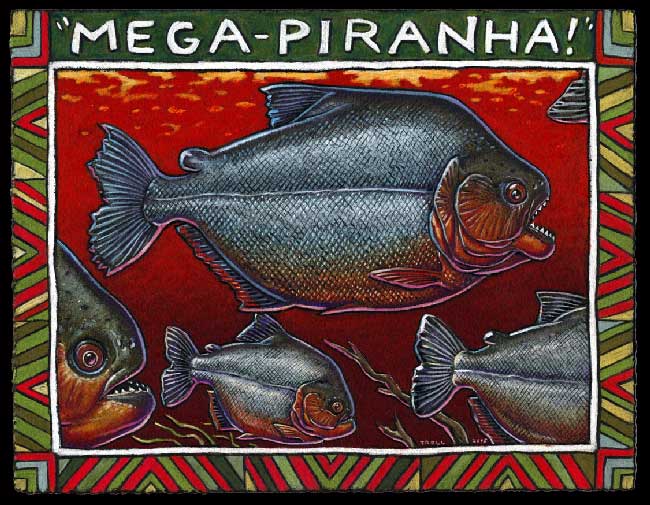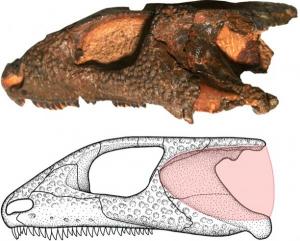Mosquito Immune System: Same Immune Factors Used To Fight Malaria Parasite And Infectious Pathogens
Mosquito Immune System: Same Immune Factors Used To Fight Malaria Parasite And Infectious Pathogens
Mosquitoes employ the same immune factors to fight off bacterial pathogens as they do to kill malaria-causing Plasmodium parasites, according to a study by researchers at the Johns Hopkins Bloomberg School of Public Health. The study identified several genes that encode proteins of the mosquito’s immune system.
All of the immune genes that were involved in limiting infection by the malaria parasites were also important for the resistance to bacterial infection. However, several immune genes that were essential for resistance to bacterial infection did not affect Plasmodium infection. According to the authors, the findings add to the understanding of mosquito immunity, and could contribute towards the development of malaria-control strategies based on blocking the parasite in the mosquito. The study is published in the June 8, 2006, edition of PloS Pathogens.
“Mosquitoes that transmit malaria can kill large portions of Plasmodium parasites, and some mosquito strains are totally resistant to Plasmodium. However, our observations suggest that mosquitoes have not evolved a highly-specific defense against malaria parasites. Instead, they employ factors of their antimicrobial defense system to combat the Plasmodium parasite,” said George Dimopoulos, Ph.D., senior author of the study and assistant professor with the Bloomberg School’s Malaria Research Institute. “The degree of mosquito susceptibility to Plasmodium, and thereby its capacity to transmit malaria, may therefore partly depend on the mosquito’s microbial exposure, which can differ greatly between different geographic sites. Potentially, we could boost the mosquito’s capacity to fight the malaria parasite by exposing it to certain microbes or compounds that resemble the microbe molecules responsible for immune activation.”
In this study, the investigators also analyzed the immune responses of Anopheles gambiae mosquitoes to infection with different Plasmodium parasite species, one that causes malaria in humans and another that only infects rodents. The study revealed that mosquitoes mostly employ the same immune factors in defending against the two different Plasmodium species. Only a few immune genes were more important in the defense against either one of the two species.
“The mosquito’s immune system appears to employ a variety of antimicrobial defense factors (genes) against the malaria parasite, and can therefore significantly limit infection. The parasite, on the other hand, is capable of evading these defenses to a degree that allows its transmission by the mosquito. Now we have to figure out how to make the mosquito’s immune system more effective in killing malaria parasites at multiple stages that would render the development of evasive mechanisms impossible for the parasite,” said Dimopoulos.
Megapiranha is the "meg"-est piranha of them all!
Toothy 3-foot Piranha Fossil Found
If you thought piranhas were scary, be glad Megapiranha is no longer around.
Megapiranha was up to 3 feet long (1 meter) – a fish-beast four times as big as piranhas living today, studies of its jawbones indicate. It lived about 8 million to 10 million years ago and might have been quite comfortable stalking cartoon animals in an “Ice Age” movie.
….
Now a newly uncovered jawbone of a transition species ties all these teeth together. Named Megapiranha paranensis, this previously unknown fossil fish bridges the evolutionary gap between flesh-eating piranhas and their plant-eating cousins.Here’s what’s known:
Present-day piranhas have a single row of triangular teeth, like the blade on a saw, explained the researchers. Pacu have two rows of square teeth, presumably for crushing fruits and seeds.
“In modern piranhas the teeth are arranged in a single file,” said Wasila Dahdul, a visiting scientist at the National Evolutionary Synthesis Center in North Carolina. “But in the relatives of piranhas – which tend to be herbivorous fishes – the teeth are in two rows.”
The new fossil shows an intermediate pattern: teeth in a zig-zag row. This suggests that the two rows in pacu were compressed to form a single row in piranhas. “It almost looks like the teeth are migrating from the second row into the first row,” said John Lundberg, curator at the Academy of Natural Sciences in Philadelphia and a co-author of a study of the jawbone.

Bionic Turtle Army ready to kill
Allison, a rescued green sea turtle who has only one flipper, swims with the aid of a fin attached with neoprene at the Sea Turtle, Inc., in South Padre Island, Texas, Wednesday, April 8, 2009. Without the fin, developed at the turtle rescue facility, Allison can only swim in circles. The group had previously experimented with prosthetic flippers without luck.

One of my giant mutated turtles was spotted long ago:
Scientific American, 48:292,1883.
Captain Augustus G. Hall and the crew of the schooner Annie L. Hall vouch for the following:
On March 30, while on the Grand Bank, in latitude 40 10′, longitude 33, they discovered an immense live trunk turtle, which was at first thought to be a vessel bottom up. The schooner passed within twenty-five feet of the monster, and those on board had ample oppurtunity to estimate its dimensions by a comparison with the length of the schooner. The turtle was at least 40 feet long, 30 feet wide, and 30 feet from the apex of the back to the bottom of the under shell. The flippers were 20 feet long. It was not deemed advisable to attempt its capture.
EARS!!!!
Prehistoric Reptiles From Russia Possessed The First Modern Ears
The discovery of the first anatomically modern ear in a group of 260 million-year-old fossil reptiles significantly pushes back the date of the origin of an advanced sense of hearing, and suggests the first known adaptations to living in the dark.
…..The ability of modern animals to hear a wide range of frequencies, highly important for prey capture, escape, and communication, was long assumed to have only evolved shortly before the origin of dinosaurs, not much longer than 200 million years ago, and therefore comparatively late in vertebrate history.
…..But why would these animals have possessed such an ear” “Of course this question cannot be answered with certainty”, explains Müller, “but when we compared these fossils with modern land vertebrates, we recognized that animals with an excellent sense of hearing such as cats, owls, or geckos, are all active at night or under low-light conditions.

Maiacetus inuus whales think they are cool because they give birth on land
Fossils from two early whales — a male and a rare pregnant female — shed light on how these ancestors to modern whales made the leap from walking on land to ruling the sea.
The fetal remains, found with the 47.5 million-year-old pregnant female, were positioned head down, suggesting these creatures gave birth on land, while spending much of the rest of their time in the water
……
The fetal skeleton is the first specimen of the extinct whale group known as Archaeoceti, and the find represents a new species named Maiacetus inuus, a hybrid of the words for “mother whale” and Inuus, the name of a Roman fertility god.The fetus was positioned head down like other land animals, allowing it to begin breathing right away. This suggests the group had not yet made the leap to giving birth in the water like modern whales, which are born tail first to allow them to start swimming right after birth.
The 8.5-foot (2.59-meter) male, which was collected in the same fossil beds as the female, is about 12 percent bigger and had fangs that were 20 percent larger than those of the female. Gingerich said these well developed choppers suggest the creatures spent a large portion of their time catching and eating fish.
Both fossils had four flipper-like legs that could have supported their weight on land, but only for short distances, suggesting these whales likely came on shore to mate, rest and give birth, Gingerich said.


